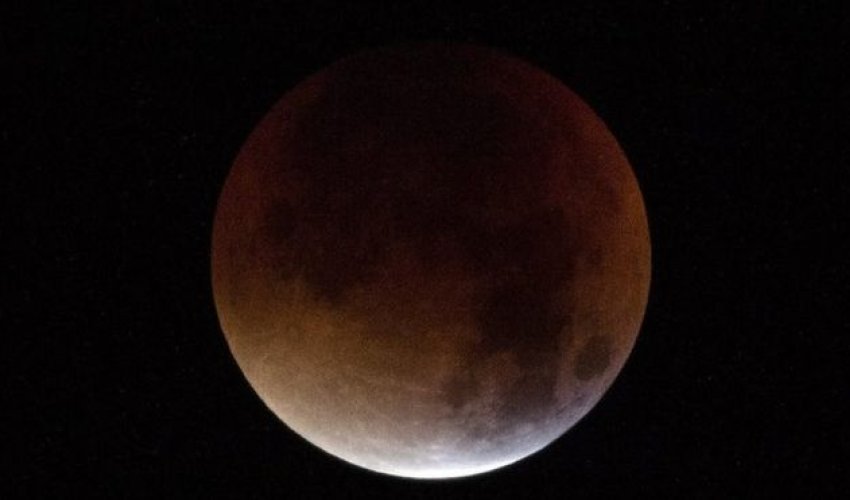'Supermoon' coincides with lunar eclipse

People around the world are watching the skies to observe a rare celestial event, as a lunar eclipse coincides with a so-called "supermoon".
A supermoon occurs when the Moon is in the closest part of its orbit to Earth, meaning it appears larger in the sky.
The eclipse - which made the Moon appear red - has been visible in North America, South America, West Africa and Western Europe.
This phenomenon was last observed in 1982 and won't come again until 2033.
But the definition of a supermoon is debated among astronomers.
Skywatchers in the western half of North America, the rest of Europe and Africa, the Middle East and South Asia were expected to see a partial eclipse.
From the UK, observers saw the Moon pass through the Earth's shadow in the early hours of Monday morning. In North and South America the eclipse was seen on Sunday evening.
The supermoon, where Earth's satellite is near its minimum distance from our planet, means that the Moon will appear 7-8% larger in the sky.
The moon may look rust-coloured during a total lunar eclipse - giving rise to its nickname Blood Moon. This is because the Earth's atmosphere scatters blue light more strongly than red light, and it is this red light that reaches the lunar surface
During the eclipse, the Moon lies in front of the stars of the constellation Pisces
In a total lunar eclipse, the Earth, Sun and Moon are almost exactly in line and the Moon is on the opposite side of the Earth from the Sun.
As the full Moon moves into our planet's shadow, it dims dramatically but usually remains visible, lit by sunlight that passes through the Earth's atmosphere.
As this light travels through our planet's gaseous envelope, the green to violet portions get filtered out more than the red portion, with the result that light reaching the lunar surface is predominantly red in colour.
Observers on Earth may see a Moon that is brick-coloured, rusty, blood red or sometimes dark grey, depending on terrestrial conditions.
Dr Robert Massey, deputy executive director of the UK's Royal Astronomical Society, told BBC News that the eclipse is an "incredibly beautiful event".
A supermoon occurs when a full or new moon coincides with a Moon that is nearing its minimum distance (perigee) to Earth.
The Moon takes an elliptical orbit around Earth, which means that its average distance changes from as far as 405,000km (its apogee) to as close as 363,000km at the perigee.
The coincidence between a supermoon and an eclipse means that Earth's lone companion is expected to look 7-8% bigger. But Dr Massey added: "The definition of 'supermoon' is slightly problematic.
(BBC)





www.ann.az
Similar news
Similar news
Latest news 
More news 



































 Photo
Photo 



 Video
Video 

